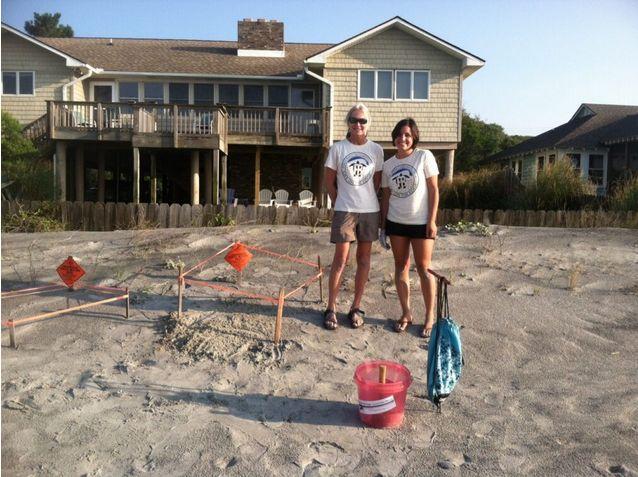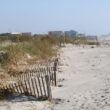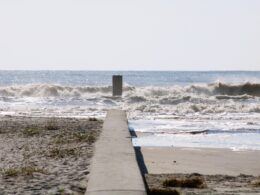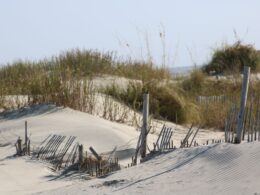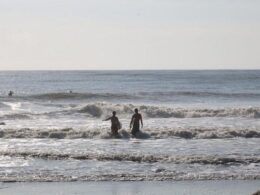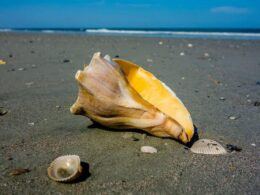This time of the year represents the end of sea turtle hatching season. Female turtles come ashore during the summer months to lay eggs, and the nestlings develop for 45-65 days before digging their way out of the sandy pits where they were delivered. Females are the only turtles to ever explore beach areas and only do so to lay eggs. Otherwise, they are found solely in the watery depths looking for food. Thankfully for Folly Beach, we have a program in place to protect and care for these threatened and endangered species throughout this potentially dangerous process.
Folly’s Turtles is an organization that gathers information on identified nests as they patiently wait for the nestlings to hatch. Volunteers organize in the early hours on a daily basis to wander the beaches while looking out for any signs of turtle activity. As the female turtles drag themselves toward the dunes, usually in the evening hours, the volunteer documents the location and how many eggs are in the nest. Warning tape is then placed around the nest to warn people to stay away, and the wait begins.
Educating the public about the dangers and threats to the turtle population is an important aspect of the program. Threats such as Beach Vitex, an invasive plant that is encroaching the beaches in a kudzu like fashion, are causing a huge disturbance for the turtles. As the females try to locate a safe spot to deliver her eggs, the plants denseness and presence in the dunes confuse them. People are requested to not try and dig up Beach Vitex, but please report any sightings you have to the Beach Vitex Task Force.
Folly Beach has a well known issue with erosion, and a renourishment plan has been in place for decades to replenish the sand that continually gets pulled back into the sea. The mile just northeast of the Washout is the most prominent area for turtle nesting, and a lack of a beach offers no solace to females trying to build a nest. The replenishment efforts focus on this area first in an effort to promote a comfortable and quiet area for the turtles activity.
Other threats that harm the sea turtle population occur by boating accidents and by them being caught on fishing equipment. When caught by fishermen on the pier, a DNR representative will come examine the animal to determine if he or she is able to be released back into the ocean. Occasionally, a turtle will swallow the entire hook and need to be taken to a rescue facility closeby. It is heartbreaking to note that sometimes only pieces of these magnificent creatures will wash up, obviously enduring trauma caused by a boating accident.
Overall, the foundation keeps a record of each sighting of hurt or sick animals, each nest and its content, and the numbers of hatched, lost, and strandings we have along Folly Beach. Nancy Smith, who works with the foundation, says that volunteers can contact her next February to be trained and added to a growing group of people who are interested in helping to keep the sea turtle population safe






